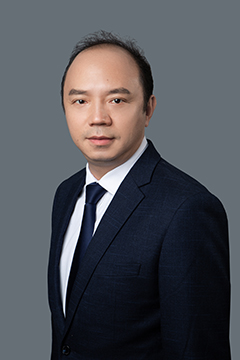
Professor, Department of Biochemistry and Molecular Biology,West China School of Basic Medical Science and Forensic Medicine, Sichuan University
Address: No.17, the Third section of Renmin South Road,Room 325, Yifu Building, Chengdu, 610041, Sichuan, China
Tel/Fax:(+86) 28 85502155
E-mail: liuji6103@scu.edu.cn
Dr. Liu’s laboratory focuses on the DNA damage repair mechanism in ageing and cancer. The ongoing research projects include: 1) The role of DNA damage repair in the carcinogenesis and ageing molecular mechanism; 2) Brain gene study and gene expression regulation; 3) Study of drug targeting delivery and screening of anti-tumor drugs.
Dr. Liu has published 60 papers and 9 book chapters. Representative publications have been appeared in FASEB J, European Journal of Pharmaceutical Sciences, International Journal of Pharmaceutics and Journal of Thoracic Oncology.
Dr. Liu is a Member of the council and the deputy-secretary-general of Sichuan biochemistry and molecular biology Association, Member of the council of china medical biochemistry and molecular biology Association. He is also an academic and technical leader of Health and Family Planning Commission of Sichuan Province. He is a scientific reviewer for PLoS ONE, International Journal of Oncology, Oncology Reports, etc.
Education and Academic Career
PhD. West China School ofBasic Medical Scienceand Forensic Medicine, Sichuan University 2004
MS. School of Basic Medical Sciences, West China University of Medical Sciences.1997
BS. School of Pharmacy, Beijing Medical University. 1991
Teaching Assistant Pharmaceutics at School of Pharmacy, West China University of Medical Sciences1991-1994:
Lecturer, The first affiliated hospital of West China University of Medical Sciences1997-2000
Lecturer, Associate Professor and ProfessorWest China School of Basic Medical Science and Forensic Medicine , Sichuan university2000-present:
Visiting scholar at Department of Biochemistry and Molecular Biology,Eastern Tennesse State University, USA, 2006-2007
Visiting scholar of California State University, Long Beach College,USA, 2012
Area of Research Interests
1. DNA damage and repair /mechanism of ageing and tumor
2. Brain gene study and gene expression regulation
3. Study of drug targeting delivery and screening of anti-tumor drugs.
Selected Publications:
1. Progerin Sequestration of PCNA Promotes Replication Fork Collapse and Mislocalization of XPA in Progeroid Syndromes.FASEB J, 2017, 31(9):3882-3893. Co-first authors.
2. Losartan Loaded Liposomes Improve the Antitumor Efficacy of Liposomal PaclitaxelModified with pH Sensitive Peptides by Inhibition of Collagen in Breast Cancer.Pharmaceutical Development and Technology, 201,23(1):13-21. Corresponding author.
3. Esophageal cancer risk is associated with polymorphisms of DNA repair genes MSH2 and WRN in chinese population.Journal of Thoracic Oncology, 2012, 7(2): 448–452. Corresponding author.
4. Involvement of Xerodermapigmentosum group A(XPA) in progeria arising from defective maturation of prelamin A.FASEB J, 2008, 22 (2): 603-611. author.
5. Lactoferrin-modified procationic liposomes as a novel carrier for brain delivery.European Journal of Pharmaceutical Sciences, 2010 (40): 94–102. Corresponding author.
6. Liposome formulated with TAT-modified cholesterol for the treatment of gliomas.International Journal of Pharmaceutics, 2011,419:85-95. Corresponding author.
7. Lactoferrin modified doxorubicin-loaded procationic liposomes for the treatment of gliomas.European Journal of Pharmaceutical Sciences, 2011,44: 164–173. Corresponding author.
8. Liposome modified cholesterol for improving delivery and the therapeutic efficacy of brain glioma.International Journal of Pharmaceutics, 2011, 420:304-312. Corresponding author.
9. LHRHa aided liposomes targeting to human ovarian tumor cells: preparation and cellular uptake.Pharmazie, 2008, 63: 434–438. Corresponding author.
10. Characteristics comparison before and after lyophilization of transferrin Modified Procationic-Liposome-Protamine-DNA complexes (Tf-PLPD).Archives of Pharm Research, 2007, 30(1): 102-108. Corresponding author.